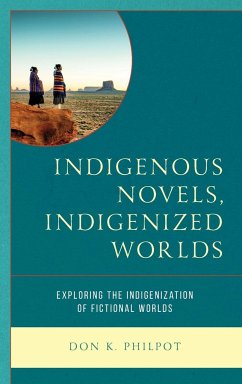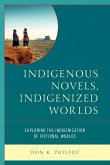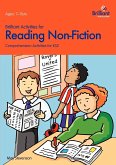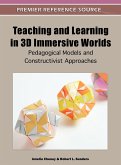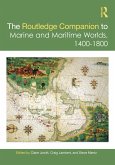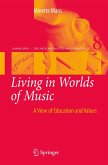- Gebundenes Buch
- Merkliste
- Auf die Merkliste
- Bewerten Bewerten
- Teilen
- Produkt teilen
- Produkterinnerung
- Produkterinnerung
The fictional worlds created by many contemporary American and Canadian Indigenous novelists for young people provide unique access to the lived experiences of Indigenous people, past, present, and future and the often inaccessible worlds they inhabit. Readers age 10-16 will gain many insights about Indigenous people and themselves—Indigenous and non-Indigenous readers alike—through sustained immersion in fictional worlds where Indigenous people are foregrounded, active, autonomous, respected, and valued.
Andere Kunden interessierten sich auch für
![Indigenous Novels, Indigenized Worlds Indigenous Novels, Indigenized Worlds]() Don K. PhilpotIndigenous Novels, Indigenized Worlds26,99 €
Don K. PhilpotIndigenous Novels, Indigenized Worlds26,99 €![Teaching History with Science Fiction Films Teaching History with Science Fiction Films]() A. Bowdoin Van RiperTeaching History with Science Fiction Films52,99 €
A. Bowdoin Van RiperTeaching History with Science Fiction Films52,99 €![Brilliant Activities for Reading Non-Fiction Brilliant Activities for Reading Non-Fiction]() M. StevensonBrilliant Activities for Reading Non-Fiction21,99 €
M. StevensonBrilliant Activities for Reading Non-Fiction21,99 €![The Technique Of Fiction Writing The Technique Of Fiction Writing]() Robert Saunders DowstThe Technique Of Fiction Writing30,99 €
Robert Saunders DowstThe Technique Of Fiction Writing30,99 €![Teaching and Learning in 3D Immersive Worlds Teaching and Learning in 3D Immersive Worlds]() Teaching and Learning in 3D Immersive Worlds165,99 €
Teaching and Learning in 3D Immersive Worlds165,99 €![The Routledge Companion to Marine and Maritime Worlds 1400-1800 The Routledge Companion to Marine and Maritime Worlds 1400-1800]() The Routledge Companion to Marine and Maritime Worlds 1400-1800260,99 €
The Routledge Companion to Marine and Maritime Worlds 1400-1800260,99 €![Living in Worlds of Music Living in Worlds of Music]() Minette MansLiving in Worlds of Music103,99 €
Minette MansLiving in Worlds of Music103,99 €-
-
-
The fictional worlds created by many contemporary American and Canadian Indigenous novelists for young people provide unique access to the lived experiences of Indigenous people, past, present, and future and the often inaccessible worlds they inhabit. Readers age 10-16 will gain many insights about Indigenous people and themselves—Indigenous and non-Indigenous readers alike—through sustained immersion in fictional worlds where Indigenous people are foregrounded, active, autonomous, respected, and valued.
Produktdetails
- Produktdetails
- Verlag: Rowman & Littlefield Publishers
- Seitenzahl: 154
- Erscheinungstermin: 24. August 2023
- Englisch
- Abmessung: 235mm x 157mm x 13mm
- Gewicht: 384g
- ISBN-13: 9781475860481
- ISBN-10: 147586048X
- Artikelnr.: 67656730
- Herstellerkennzeichnung
- Libri GmbH
- Europaallee 1
- 36244 Bad Hersfeld
- gpsr@libri.de
- Verlag: Rowman & Littlefield Publishers
- Seitenzahl: 154
- Erscheinungstermin: 24. August 2023
- Englisch
- Abmessung: 235mm x 157mm x 13mm
- Gewicht: 384g
- ISBN-13: 9781475860481
- ISBN-10: 147586048X
- Artikelnr.: 67656730
- Herstellerkennzeichnung
- Libri GmbH
- Europaallee 1
- 36244 Bad Hersfeld
- gpsr@libri.de
Don K. Philpot is a teacher, teacher educator, and writer. He teaches undergraduate and graduate courses on the topics of instructional methodologies, content area reading, reading and writing instruction, and children's literature in south central Pennsylvania.
ContentsContents
Prefatory Note About In-Text Citations and References
Chapter 1 Indigenous Novels, Indigenized Worlds
Indigenous Novels, Indigenized Worlds
Indigenous Authors, Indigenous Novels, and Narrative Genre
Book Organization and Chapter Overviews
Indigenized Fictional Worlds: Books 1 and 2
References
Chapter 2 Indigenous Novels and Novelists
Chapter Overview
Selected Novels
Showcased Novelists
Methodology: the Identification and Grouping of Indigenizing Features
References
Chapter 3 Group A: Time, History, Ancestry
Chapter Overview
1. Time
2. Tribal history
3. Ancestry
Endnotes
Chapter 4 Group B: Cultural (Religious) Beliefs
Chapter Overview
4. Religious Beliefs and Practices
Set 4.1 Central Religious Beliefs
Set 4.2 Sacred Religious Practices and Objects
Endnotes
References
Chapter 5 Group B: Cultural Values And Events
Chapter Overview
5. Cultural Values
6. Cultural Events
Set 6.1 Traditional Games, Dancing, and Songs
Set 6.2 Family-based Feasts
Set 6.3 Festivals and Special Community Events
Set 6.4 Ceremonies
Endnotes
References
Chapter 6 Group B: Cultural Traditions
Chapter Overview
7. Cultural Traditions
Set 7.1 Traditional Knowledge, Skills, and Roles
Set 7.2 Subsistence Strategies
Set 7.3 Traditional Modes of Travel and Conveyance
Set 7.4 Traditional Houses and Shelters
Set 7.5 Traditional Craftmanship and Repairs
Set 7.6 Traditional Implements and Materials
Set 7.7 Traditional Foods, Drinks, and Medicines
Endnotes
Chapter 7 Group C: Language Use, Stories, and Storytelling
Chapter Overview
8. Language Use, Storytelling, and Stories
Set 8.1 Language Use
Set 8.2 Storytelling, Stories, and Writing
Endnotes
References
Chapter 8 Group C: Family Life and Kinship
Chapter Overview
9. Family Life and Kinship
Set 9.1 Family Life
Set 9.2 Childbirth and Childhood Play
Set 9.3 Coming of Age, Courtship, and Marriage
Set 9.4 Kinship
References
Chapter 9 Group D: Destruction and Restoration
Chapter Overview
10. Divestments, Denigration, Subjugation, Disease
Set 10.1 Forced Appropriation, Moves, Separations, Sterilization, and
Deprivation
Set 10.2 Cultural Denigration, Disdain, and Identity Concealment
Set 10.3 Harassment, Subjugation, and Brutality
Set 10.4 Disease
11. Sovereignty, Defense, and Leadership
Set 11.1 Sovereignty and Defense
Set 11.2 Leadership
12. Recovery and Restoration
Concluding Thoughts: Indigenous Novels, Indigenized Worlds
Endnotes
References
Appendix A: An Inventory of Features For Two Novels
Group A: Time, History, Ancestry
Group B: Cultural Beliefs, Values, Events, Traditions
Group C: Language, Storytelling, Family Life, Kinship
Group D: Destruction & Restoration
Appendix B: An Inventory of Features For Two Novels
Group A: Time, History, Ancestry
Group B: Cultural Beliefs, Values, Events, Traditions
Group C: Language, Storytelling, Family Life, Kinship
Group D: Destruction & Restoration
About the Author
Prefatory Note About In-Text Citations and References
Chapter 1 Indigenous Novels, Indigenized Worlds
Indigenous Novels, Indigenized Worlds
Indigenous Authors, Indigenous Novels, and Narrative Genre
Book Organization and Chapter Overviews
Indigenized Fictional Worlds: Books 1 and 2
References
Chapter 2 Indigenous Novels and Novelists
Chapter Overview
Selected Novels
Showcased Novelists
Methodology: the Identification and Grouping of Indigenizing Features
References
Chapter 3 Group A: Time, History, Ancestry
Chapter Overview
1. Time
2. Tribal history
3. Ancestry
Endnotes
Chapter 4 Group B: Cultural (Religious) Beliefs
Chapter Overview
4. Religious Beliefs and Practices
Set 4.1 Central Religious Beliefs
Set 4.2 Sacred Religious Practices and Objects
Endnotes
References
Chapter 5 Group B: Cultural Values And Events
Chapter Overview
5. Cultural Values
6. Cultural Events
Set 6.1 Traditional Games, Dancing, and Songs
Set 6.2 Family-based Feasts
Set 6.3 Festivals and Special Community Events
Set 6.4 Ceremonies
Endnotes
References
Chapter 6 Group B: Cultural Traditions
Chapter Overview
7. Cultural Traditions
Set 7.1 Traditional Knowledge, Skills, and Roles
Set 7.2 Subsistence Strategies
Set 7.3 Traditional Modes of Travel and Conveyance
Set 7.4 Traditional Houses and Shelters
Set 7.5 Traditional Craftmanship and Repairs
Set 7.6 Traditional Implements and Materials
Set 7.7 Traditional Foods, Drinks, and Medicines
Endnotes
Chapter 7 Group C: Language Use, Stories, and Storytelling
Chapter Overview
8. Language Use, Storytelling, and Stories
Set 8.1 Language Use
Set 8.2 Storytelling, Stories, and Writing
Endnotes
References
Chapter 8 Group C: Family Life and Kinship
Chapter Overview
9. Family Life and Kinship
Set 9.1 Family Life
Set 9.2 Childbirth and Childhood Play
Set 9.3 Coming of Age, Courtship, and Marriage
Set 9.4 Kinship
References
Chapter 9 Group D: Destruction and Restoration
Chapter Overview
10. Divestments, Denigration, Subjugation, Disease
Set 10.1 Forced Appropriation, Moves, Separations, Sterilization, and
Deprivation
Set 10.2 Cultural Denigration, Disdain, and Identity Concealment
Set 10.3 Harassment, Subjugation, and Brutality
Set 10.4 Disease
11. Sovereignty, Defense, and Leadership
Set 11.1 Sovereignty and Defense
Set 11.2 Leadership
12. Recovery and Restoration
Concluding Thoughts: Indigenous Novels, Indigenized Worlds
Endnotes
References
Appendix A: An Inventory of Features For Two Novels
Group A: Time, History, Ancestry
Group B: Cultural Beliefs, Values, Events, Traditions
Group C: Language, Storytelling, Family Life, Kinship
Group D: Destruction & Restoration
Appendix B: An Inventory of Features For Two Novels
Group A: Time, History, Ancestry
Group B: Cultural Beliefs, Values, Events, Traditions
Group C: Language, Storytelling, Family Life, Kinship
Group D: Destruction & Restoration
About the Author
ContentsContents
Prefatory Note About In-Text Citations and References
Chapter 1 Indigenous Novels, Indigenized Worlds
Indigenous Novels, Indigenized Worlds
Indigenous Authors, Indigenous Novels, and Narrative Genre
Book Organization and Chapter Overviews
Indigenized Fictional Worlds: Books 1 and 2
References
Chapter 2 Indigenous Novels and Novelists
Chapter Overview
Selected Novels
Showcased Novelists
Methodology: the Identification and Grouping of Indigenizing Features
References
Chapter 3 Group A: Time, History, Ancestry
Chapter Overview
1. Time
2. Tribal history
3. Ancestry
Endnotes
Chapter 4 Group B: Cultural (Religious) Beliefs
Chapter Overview
4. Religious Beliefs and Practices
Set 4.1 Central Religious Beliefs
Set 4.2 Sacred Religious Practices and Objects
Endnotes
References
Chapter 5 Group B: Cultural Values And Events
Chapter Overview
5. Cultural Values
6. Cultural Events
Set 6.1 Traditional Games, Dancing, and Songs
Set 6.2 Family-based Feasts
Set 6.3 Festivals and Special Community Events
Set 6.4 Ceremonies
Endnotes
References
Chapter 6 Group B: Cultural Traditions
Chapter Overview
7. Cultural Traditions
Set 7.1 Traditional Knowledge, Skills, and Roles
Set 7.2 Subsistence Strategies
Set 7.3 Traditional Modes of Travel and Conveyance
Set 7.4 Traditional Houses and Shelters
Set 7.5 Traditional Craftmanship and Repairs
Set 7.6 Traditional Implements and Materials
Set 7.7 Traditional Foods, Drinks, and Medicines
Endnotes
Chapter 7 Group C: Language Use, Stories, and Storytelling
Chapter Overview
8. Language Use, Storytelling, and Stories
Set 8.1 Language Use
Set 8.2 Storytelling, Stories, and Writing
Endnotes
References
Chapter 8 Group C: Family Life and Kinship
Chapter Overview
9. Family Life and Kinship
Set 9.1 Family Life
Set 9.2 Childbirth and Childhood Play
Set 9.3 Coming of Age, Courtship, and Marriage
Set 9.4 Kinship
References
Chapter 9 Group D: Destruction and Restoration
Chapter Overview
10. Divestments, Denigration, Subjugation, Disease
Set 10.1 Forced Appropriation, Moves, Separations, Sterilization, and
Deprivation
Set 10.2 Cultural Denigration, Disdain, and Identity Concealment
Set 10.3 Harassment, Subjugation, and Brutality
Set 10.4 Disease
11. Sovereignty, Defense, and Leadership
Set 11.1 Sovereignty and Defense
Set 11.2 Leadership
12. Recovery and Restoration
Concluding Thoughts: Indigenous Novels, Indigenized Worlds
Endnotes
References
Appendix A: An Inventory of Features For Two Novels
Group A: Time, History, Ancestry
Group B: Cultural Beliefs, Values, Events, Traditions
Group C: Language, Storytelling, Family Life, Kinship
Group D: Destruction & Restoration
Appendix B: An Inventory of Features For Two Novels
Group A: Time, History, Ancestry
Group B: Cultural Beliefs, Values, Events, Traditions
Group C: Language, Storytelling, Family Life, Kinship
Group D: Destruction & Restoration
About the Author
Prefatory Note About In-Text Citations and References
Chapter 1 Indigenous Novels, Indigenized Worlds
Indigenous Novels, Indigenized Worlds
Indigenous Authors, Indigenous Novels, and Narrative Genre
Book Organization and Chapter Overviews
Indigenized Fictional Worlds: Books 1 and 2
References
Chapter 2 Indigenous Novels and Novelists
Chapter Overview
Selected Novels
Showcased Novelists
Methodology: the Identification and Grouping of Indigenizing Features
References
Chapter 3 Group A: Time, History, Ancestry
Chapter Overview
1. Time
2. Tribal history
3. Ancestry
Endnotes
Chapter 4 Group B: Cultural (Religious) Beliefs
Chapter Overview
4. Religious Beliefs and Practices
Set 4.1 Central Religious Beliefs
Set 4.2 Sacred Religious Practices and Objects
Endnotes
References
Chapter 5 Group B: Cultural Values And Events
Chapter Overview
5. Cultural Values
6. Cultural Events
Set 6.1 Traditional Games, Dancing, and Songs
Set 6.2 Family-based Feasts
Set 6.3 Festivals and Special Community Events
Set 6.4 Ceremonies
Endnotes
References
Chapter 6 Group B: Cultural Traditions
Chapter Overview
7. Cultural Traditions
Set 7.1 Traditional Knowledge, Skills, and Roles
Set 7.2 Subsistence Strategies
Set 7.3 Traditional Modes of Travel and Conveyance
Set 7.4 Traditional Houses and Shelters
Set 7.5 Traditional Craftmanship and Repairs
Set 7.6 Traditional Implements and Materials
Set 7.7 Traditional Foods, Drinks, and Medicines
Endnotes
Chapter 7 Group C: Language Use, Stories, and Storytelling
Chapter Overview
8. Language Use, Storytelling, and Stories
Set 8.1 Language Use
Set 8.2 Storytelling, Stories, and Writing
Endnotes
References
Chapter 8 Group C: Family Life and Kinship
Chapter Overview
9. Family Life and Kinship
Set 9.1 Family Life
Set 9.2 Childbirth and Childhood Play
Set 9.3 Coming of Age, Courtship, and Marriage
Set 9.4 Kinship
References
Chapter 9 Group D: Destruction and Restoration
Chapter Overview
10. Divestments, Denigration, Subjugation, Disease
Set 10.1 Forced Appropriation, Moves, Separations, Sterilization, and
Deprivation
Set 10.2 Cultural Denigration, Disdain, and Identity Concealment
Set 10.3 Harassment, Subjugation, and Brutality
Set 10.4 Disease
11. Sovereignty, Defense, and Leadership
Set 11.1 Sovereignty and Defense
Set 11.2 Leadership
12. Recovery and Restoration
Concluding Thoughts: Indigenous Novels, Indigenized Worlds
Endnotes
References
Appendix A: An Inventory of Features For Two Novels
Group A: Time, History, Ancestry
Group B: Cultural Beliefs, Values, Events, Traditions
Group C: Language, Storytelling, Family Life, Kinship
Group D: Destruction & Restoration
Appendix B: An Inventory of Features For Two Novels
Group A: Time, History, Ancestry
Group B: Cultural Beliefs, Values, Events, Traditions
Group C: Language, Storytelling, Family Life, Kinship
Group D: Destruction & Restoration
About the Author

